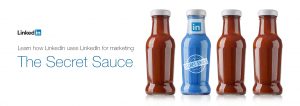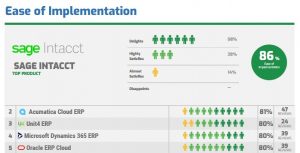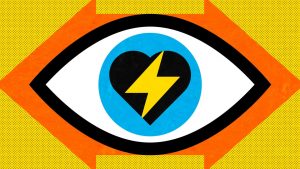 Let’s get to the point: you have a blog, business or personal, and you want to get the best ROI possible with each article you publish. Writing articles takes time and effort, so you don’t want that to be wasted, right? I assure you that your article will provide better value and make your readers stick around longer if you include these 7 elements of blog content.
Let’s get to the point: you have a blog, business or personal, and you want to get the best ROI possible with each article you publish. Writing articles takes time and effort, so you don’t want that to be wasted, right? I assure you that your article will provide better value and make your readers stick around longer if you include these 7 elements of blog content.
1) A compelling headline that follows current trends
I must admit: this is not a talent I have perfected… yet. I lean more toward the informative headline rather than a catchy or controversial one. I’ve always thought my readers would prefer to know what they’re getting into. That’s clearly not always the case. There’s nothing wrong with catchy or controversial if it is working for you.
- When you create your headline, are you aiming for one that informs or intrigues?
- Do you go at it alone, or have you referred to the advice others provide?
- If alone, how do you determine what your headline should say?
This is definitely not a topic about which you should listen to me alone, so below are a couple articles from Neil Patel and Heidi Cohen. While I may have my advice, and another blogger may contradict it, it’s always a good idea to find the approach that works best for you.
The Formula for a Perfect Headline
How to Craft Headlines That Draw People to Your Content
2) An introduction that hooks the reader in
How do you approach your article introductions? As a reader, I’ve always been a sucker for ones that ask questions about my needs and interests. When I feel like an author is speaking directly to me as a person, I keep reading. Otherwise, I’ll just scan at most.
Do you have a specific way of wording or structuring your introductions? There are several different types of intros to choose from, but it’s always best to stick to options that appeal to your specific audience. It’s also essential to pick certain intro types even if they aren’t your personal favorites. Write intros for your audience, not yourself.
Do you need more convincing? Here are a couple articles from others that may help you with this process:
How To Write Irresistible Blog Post Introductions That’ll Keep Your Readers Reading
How to Write a Compelling Blog Introduction
3) Headings that draw attention and help readers scan
I’ve seen articles with headings that inform, and I’ve seen ones with headings that simply confuse me. I’ve heard people say that you need to create headings that draw attention, but you also need to make sense. It’s best practice to write headings that make scanning your article easier, and if you want people to understand what your article is about, make these section titles relevant and to-the-point.
I read so many articles each week in order to find valuable content to share on social media. If I can’t determine value through section headings, I’m going to stop reading and move on to another article.
Make it possible for your readers to find value and quickly scan your article. Write to inform, not confuse.
4) Images that give readers a break from all the text
Articles need imagery, especially if the content is meant to inform rather than entertain. This doesn’t have to mean adding multiple images throughout the article. Sometimes, you may be fine with just one or two. It can depend on the content and the availability of relevant images.
I’ve seen blogs that use purchased images, and that’s absolutely a great way to do this when you have the money and no time to create your own. I prefer to see blogs that include 1-2 relevant images or ones that contain text to compensate. I often provide the latter.
I’ve used images from databases in the past, but I’ve never really liked doing it. I’ve found benefits to using my own images, such as increased credibility, and the tools out there to get you going are fantastic. I highly recommend giving Canva a try. It has free and paid options, but I haven’t had to purchase anything so far.
Below are a couple articles to help you navigate the different image databases or create your own imagery. Both articles are very thorough and worth referencing.
53+ Free Image Sources for Your Blog and Social Media Posts
5 Super Easy Ways to Create Images for Your Blog Posts
5) Links to further resources, internal and external, that help your readers better understand
While I’ve been building my blog, I’ve learned that bloggers make the biggest impact and find the most success with their audience when they include both internal and external links.
- By adding links to other articles and pages on your own website, you’re connecting your current article to other places on your site. This increases the likelihood of further interaction with your content and business.
- By adding links to other websites and their resources, you give your readers a better understanding of the subject. You increase your own credibility as well as build relationships with other businesses and bloggers.
I’ve added several external resources to this article, which I highly recommend. Otherwise, I wouldn’t have included them. For every topic out there, you can always find multiple articles of value. This is why I add external links to my articles, when applicable. I want you, as a reader, to get the most out of this subject matter.
So, I add internal links to get you to read more of my articles, and I add external links to help you solve any problem and learn as much as possible about the topics you care about.
6) A summary section that gives readers a quick explanation or reference
All your articles should have a conclusion that helps readers understand the point of what they just read. If a list post, adding the items alone at the end can give readers a quick reference to use.
Your summary should answer these questions regardless of the type of post:
- What was the goal/purpose of your article?
- How can this information help your readers?
- What should readers do next?
Keep your summary short and to-the-point. Just like the introduction, make sure your readers know what value can come from your article. Give them a reason to refer to your article in the future, maybe even share it with their social communities.
7) A call to action that offers more for your readers
Do you have ebooks or other offers you can give to your readers after reading your articles? Adding a call-to-action (CTA) to the end of your article rewards the visitors who read or scrolled to the bottom of your article. It gives them something more to use, and gives you further opportunities to increase activity (sales, donations or otherwise) on your website.
A CTA is a must for all your articles. For me, I want people to join me on social media and subscribe to my blog. It may not be an ebook or free service, but it gives readers the chance to learn more about marketing via social media and future blog articles.
When you give visitors something to do after reading, you increase the ROI of your article. You’ll have the opportunity to bring your readers to a sign-up page, increasing your subscribers list. You can lead readers to a donations or sales page to improve in that regard. A CTA helps you get more out of your article while also benefitting your readers as well.
———
Summary
List items:
- A compelling headline that follows current trends
- An introduction that hooks the reader in
- Headings that draw attention and help readers scan
- Images that give readers a break from all the text
- Links to further resources, internal and external, that help your readers better understand
- A summary section that gives readers a quick explanation or reference
- A call to action that offers more for your readers
(223)





